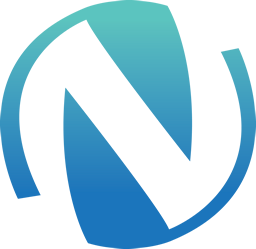From Concept to Clickable React.js Prototype in Just 8 Days Using AI
Building a fully functional prototype used to take weeks of planning, design cycles, feedback loops, and development time. Today, with the right mix of human expertise, AI-assisted workflows, and a disciplined engineering process, teams can move dramatically faster without compromising quality.
At Naga Info Solutions, we recently completed the EatNG prototype, an AI-powered restaurant food ordering and table reservation platform, in just 8 days. This wasn’t an experiment in speed for the sake of speed. It was a demonstration of structured execution, strategic use of modern AI tools, and a well-orchestrated collaboration between design and engineering.
By combining AI Design & Prototyping, disciplined agile practices, and the strengths of tools like Figma, React.js, Cursor, and Claude Code, we transformed a concept into a polished, clickable, production-ready prototype, far faster than traditional development timelines. And all of this happened without cutting corners or sacrificing user experience, performance, or engineering clarity.
This article outlines how we approached the EatNG prototype, the engineering decisions behind it, and how enterprises can leverage similar workflows to accelerate product development without losing control of the creative and technical process.
1. Why AI-Assisted Prototyping Changes the Speed of Software Innovation
The demand for rapid product validation keeps rising. Enterprises need to test ideas faster, validate market fit earlier, and model complex workflows before committing to long-term development. Traditional prototyping cycles simply can’t keep up.
That’s where disciplined AI-assisted engineering fits in. Unlike “AI replaces humans” narratives, this approach focuses on letting AI accelerate the right activities, layout generation, repetitive coding, code review assistance, while humans drive creativity, UX, architecture, and problem-solving.
The goal wasn’t to build a rough mockup, it was to show enterprise stakeholders what a real, functional, interactive product could look and feel like in less than two weeks. And with AI speeding up the right stages, this became achievable without compromising engineering depth or design intent.
2. Step 1: Turning Ideas Into AI-Assisted Wireframes in Figma
Every strong prototype begins with clarity, and for EatNG, that clarity took shape in Figma. AI-assisted wireframing provided a significant acceleration at this stage, generating initial layout options that our designers could refine with human judgment.
Our workflow included:
- Rapid generation of multi-screen restaurant ordering flows
- Automated layout suggestions for menu pages, checkout steps, and reservation calendars
- Fast variations of UI components to evaluate visual directions
This allowed designers to focus on what humans are great at: flow, usability, structure, and visual decision-making. Meanwhile, AI handled repetitive layout work and provided starting points that saved hours of manual wireframing.
The output? A complete set of wireframes and visual guidelines ready for seamless developer handoff.
3. Step 2: Accelerated React.js Development With Cursor
React.js remains one of the most reliable frameworks for building scalable, enterprise-grade interfaces. For the EatNG prototype, we used Cursor as our intelligent editor to speed up component creation, repetitive coding, and cross-screen consistency.
Cursor helped with:
- Generating base components from structured instructions
- Transforming Figma frames into responsive React layouts
- Automating boilerplate logic, routing, and state management
- Ensuring accurate alignment of typography, spacing, and UI elements
But here’s the key: Cursor didn’t decide the architecture. Our engineers applied judgment and architectural direction, leveraging skills we’ve sharpened across multiple intelligent platforms.
The mix of AI acceleration and human architecture ensured that EatNG’s codebase was clean, maintainable, and extensible, something every enterprise product demands.
4. Step 3: Code Review and Quality Optimization With Claude Code
Once core screens were built, we used Claude Code to review and optimize the implementation. Code reviews included:
- Refactoring opportunities
- Performance improvements
- Component abstraction suggestions
- Better modularization of shared UI elements
Claude’s analytical abilities helped us catch inefficiencies early and maintain clean engineering hygiene throughout the 8-day sprint. This aligns directly with how we approach enterprise projects in general, blending human engineering discipline with AI-powered optimization.
The outcome? A codebase that wasn’t simply functional, it was clean, scalable, and production-friendly.
5. Step 4: Agile Sprints Driving Daily Design-to-Development Iteration
The 8-day prototype wouldn’t have been possible without tight daily feedback loops. Our agile workflow enabled:
- Daily syncs between design and engineering
- Rapid adjustments based on new assumptions
- Continuous integration of new features
- Instant visual reviews from stakeholders
This rapid iteration style is part of what makes us a high-output Software Outsourcing Company, we prioritize clarity, cadence, and communication. EatNG benefited from the same discipline we apply across multiple other large-scale implementations.
By the end of Day 8, the prototype wasn’t just clickable. It was complete, visually aligned, structured for next-phase development, and strong enough to demonstrate product vision to investors, partners, and enterprise decision-makers.
6. The Final Prototype: Production-Ready and Stakeholder-Friendly
The completed EatNG prototype included:
- End-to-end food ordering flow
- Table reservation module with calendar UI
- User authentication screens
- Restaurant menu and item customization
- Responsive designs for mobile & desktop
This prototype is not a “rough demo.” It is a tangible showcase of functionality, usability, and brand identity. And the best part, it offers a clear blueprint for full-scale product development through our Web Development and Mobile App Development teams.
More importantly, it demonstrates how enterprises can reduce months of development cycles into a matter of days when the right tools and processes are orchestrated correctly.
7. Lessons for Enterprise Teams Building With AI Acceleration
Our 8-day EatNG prototype reinforced several principles every enterprise should consider when implementing AI Development or accelerating digital initiatives:
1. Use AI to accelerate, not replace, core engineering
Automation works best when it speeds up repetitive or predictable work. Architecture, experience design, and technical decisions must remain human-led.
2. Establish a clear design-to-dev pipeline
AI improves speed only when your workflow is well structured. Design teams and engineers should operate in sync, not in silos.
3. Validate early and often
Rapid prototyping is a competitive advantage. Testing ideas early enables faster business decisions and removes ambiguity before development begins.
4. Build with future scale in mind
A prototype should reflect real engineering sensibilities. EatNG wasn’t just a clickable UI, it was architected with scalability and future features in mind.
8. Conclusion: AI + Expertise = Faster, Smarter, More Controlled Product Development
The EatNG project is proof that enterprises no longer need to choose between speed and quality. With the right blend of human insight, AI acceleration, and structured engineering workflows, teams can build functional product prototypes in a fraction of traditional timelines.
But the most important lesson is this: AI did not replace the team. It amplified the team. It empowered designers to explore more variations, helped engineers eliminate repetitive tasks, and allowed reviewers to maintain high-quality standards, without adding extra time.
At Naga Info Solutions, this is the standard we bring to every engagement, whether it’s AI Development, software outsourcing, AI design & prototyping, or end-to-end web application development.
If your organization is exploring a new digital initiative or wants to validate product ideas faster, our engineering team can help you achieve the same level of precision, speed, and control.
Ready to Build Your Next Prototype?
We help enterprises validate ideas, reduce time-to-market, and build scalable AI-powered solutions with clarity and speed. Explore our services:
Book a consultation and turn your concept into a working prototype, faster than you ever thought possible.





